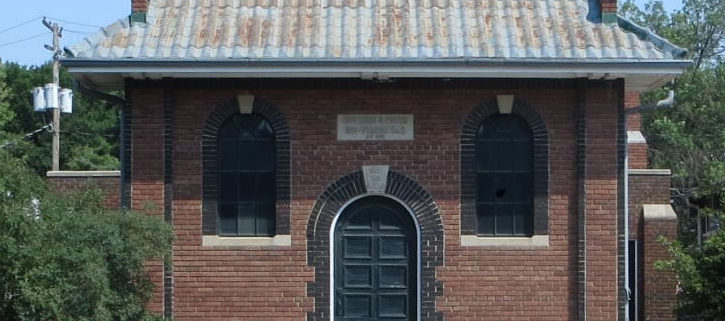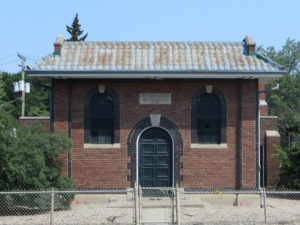SaskPower Substation No. 2: Making Loss of Local Heritage a Thing of the Past
It was the end of the line for SaskPower’s Substation No. 2 on the 1900 block of Elphinstone Street. Built in 1930 by the Regina Light and Power Company, the substation made it possible to extend power services to developing neighbourhoods. The building was designed to fit in with its residential environment, a practice that was often used at the time.
Set back from the street and surrounded with a low chain-link fence, the substation operated for nearly 88 years until SaskPower, the owner of the property, changed the way electricity was delivered to the community. Substation No. 2 was no longer needed. It was decommissioned and by mid-December 2018, the building was gone.
The substation did not have a provincial or municipal heritage designation, and it was not included on the City’s Heritage Holding Bylaw list. But it did have heritage value. For Frank Korvemaker, a local construction historian and retired archivist, Substation No. 2 represented “an integral part of the story of how Regina developed its own various utility systems and buildings in the 20th century.” Architectural elements like an overhang made of Spanish tile, the dark brick details framing the entrance, the Romanesque arch above the door, and the keystone displaying the City of Regina Coat of Arms reflected the popular design styles of the late 1920s. A heritage designation for the substation was merited, Korvemaker believes, “purely from a design perspective.”
Generally, the heritage value of a property can extend beyond its architecture and its physical connection to a community’s past. In many cases, it provides an economic benefit. The process of conserving a building can create jobs in a number of fields, including construction, architecture, engineering and design. Older buildings with character details, like Substation No.2, can open up opportunities for small businesses, increasing the value of the property. The former substation on the northeast corner of Broad Street and Dewdney Avenue, currently home to a photography studio and a non-profit organization, is evidence that conservation can bring new life to an old utility structure.
There is also an environmental benefit to protecting built heritage. The volume of materials that end up in the City’s landfill is significantly less with conservation than with demolition. Greenhouse gas emissions are also limited when buildings are conserved. According to “Environmental Benefits of Heritage Conservation,” a brochure produced by the provincial government’s Heritage Resources Branch, “Even when a house is replaced with a new, energy-efficient one, it can take 35-50 years of efficient operation to compensate for the CO2 that was emitted during new construction.”
What can you do?
In a December 20, 2018 CBC Saskatchewan interview about the demolition of Substation No. 2, Korvemaker noted, “We’re not giving anything to our future generations about the past. We’re supposed to be stewards of our environment, stewards of our city, stewards of our built heritage and we’re not good stewards.”
Fortunately, there are a number of ways people can change this situation. Becoming informed about heritage properties and conservation issues in the community is a good first step. The Prairie History Room at the Regina Public Library, the City of Regina Archives and the Saskatchewan Archives offer a wealth of heritage information.
Many heritage organizations in the city, including museums, provide interesting opportunities for learning. Throughout the summer, our own Heritage Regina guided walking tours explore Regina’s most historic locations. During the winter months, our lecture series presents the stories of the city’s history and its cultural development.
People can become more directly involved in advocating for conservation by attending information sessions or forums where heritage issues are on the agenda, by writing to their city councillor in support of heritage property designations, or by promoting heritage awareness among family members, friends and co-workers.
It is too late for Substation No. 2, but by recognizing the important role built heritage plays in the life and work of the community and by actively supporting its protection and conservation, the loss of local heritage can finally become a thing of the past.
Written by Heritage Regina, this article was first printed in the Cathedral Village Voice, May-June 2019 edition.





Just wanted to make a comment as an electrician. The Saskpower substation No 2 was demoed in story seen on news Aug.15th 2019. Was the soil and building itself tested for PCB contamination and asbestos .If yes where are the results,If no where was the building waste put so they can be checked. Whatever is to be built on this property should at the very least have a soil test done for PCB contamination.